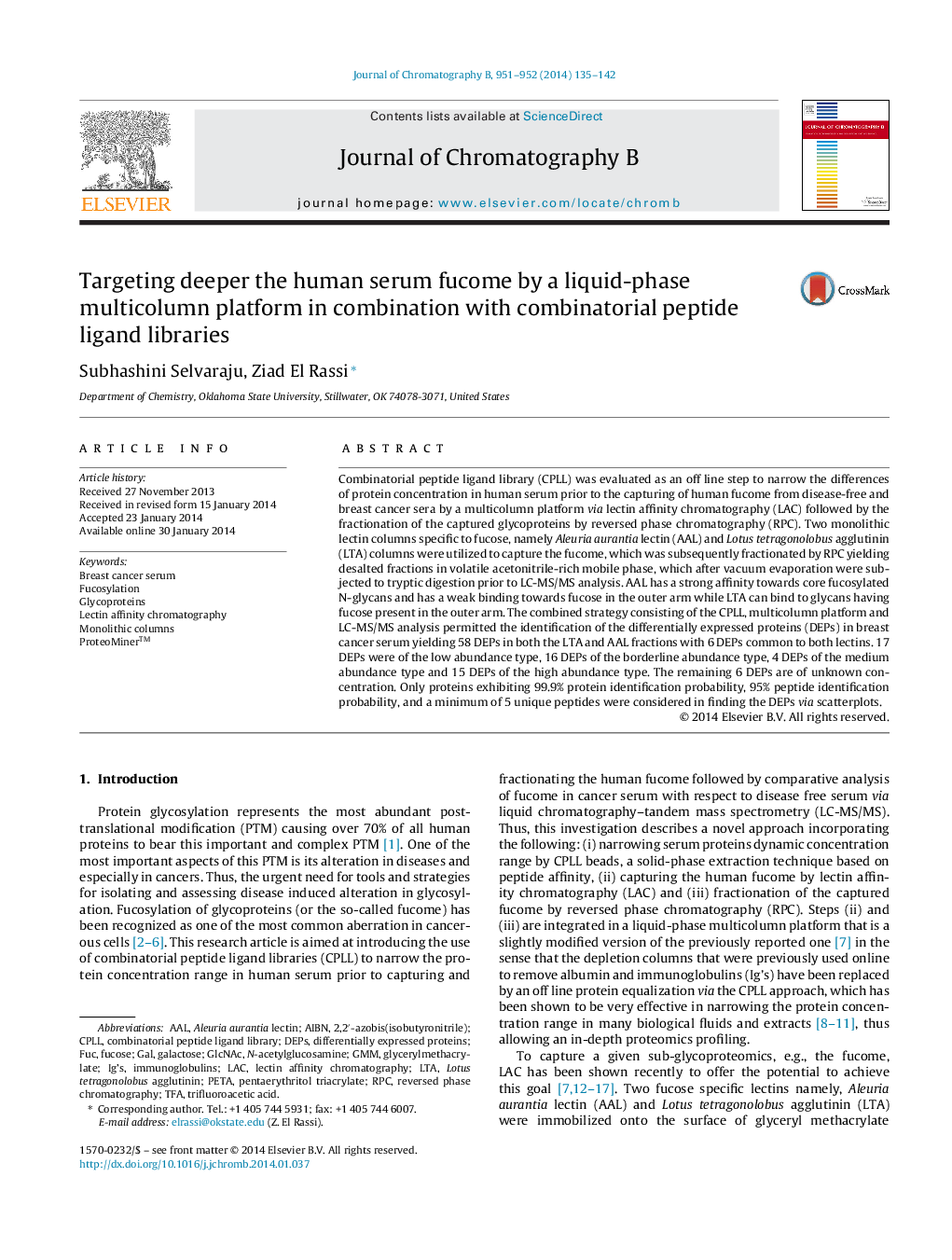| Article ID | Journal | Published Year | Pages | File Type |
|---|---|---|---|---|
| 7617928 | Journal of Chromatography B | 2014 | 8 Pages |
Abstract
Combinatorial peptide ligand library (CPLL) was evaluated as an off line step to narrow the differences of protein concentration in human serum prior to the capturing of human fucome from disease-free and breast cancer sera by a multicolumn platform via lectin affinity chromatography (LAC) followed by the fractionation of the captured glycoproteins by reversed phase chromatography (RPC). Two monolithic lectin columns specific to fucose, namely Aleuria aurantia lectin (AAL) and Lotus tetragonolobus agglutinin (LTA) columns were utilized to capture the fucome, which was subsequently fractionated by RPC yielding desalted fractions in volatile acetonitrile-rich mobile phase, which after vacuum evaporation were subjected to tryptic digestion prior to LC-MS/MS analysis. AAL has a strong affinity towards core fucosylated N-glycans and has a weak binding towards fucose in the outer arm while LTA can bind to glycans having fucose present in the outer arm. The combined strategy consisting of the CPLL, multicolumn platform and LC-MS/MS analysis permitted the identification of the differentially expressed proteins (DEPs) in breast cancer serum yielding 58 DEPs in both the LTA and AAL fractions with 6 DEPs common to both lectins. 17 DEPs were of the low abundance type, 16 DEPs of the borderline abundance type, 4 DEPs of the medium abundance type and 15 DEPs of the high abundance type. The remaining 6 DEPs are of unknown concentration. Only proteins exhibiting 99.9% protein identification probability, 95% peptide identification probability, and a minimum of 5 unique peptides were considered in finding the DEPs via scatterplots.
Keywords
LACDEPsAIBNGMM2,2′-azobis(isobutyronitrile)LTAAALTFACPLLGlcNAcPETAFucoseFucLotus tetragonolobus agglutininRPcAleuria aurantia lectinTrifluoroacetic acidimmunoglobulinsMonolithic columnsFucosylationN-acetylglucosamineDifferentially expressed proteinsCombinatorial peptide ligand libraryReversed phase chromatographyLectin affinity chromatographyGalGalactoseglycoproteins
Related Topics
Physical Sciences and Engineering
Chemistry
Analytical Chemistry
Authors
Subhashini Selvaraju, Ziad El Rassi,
